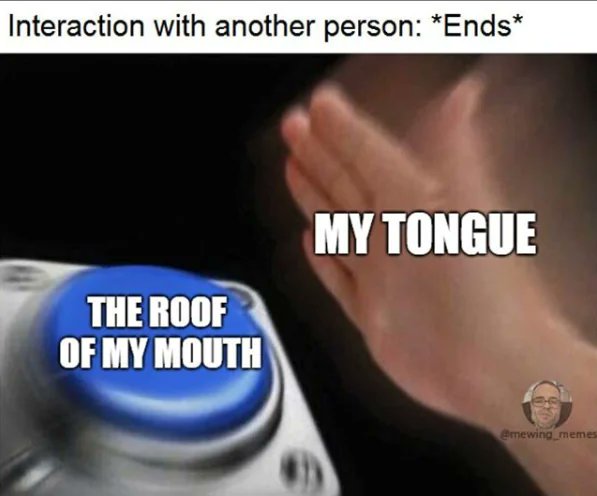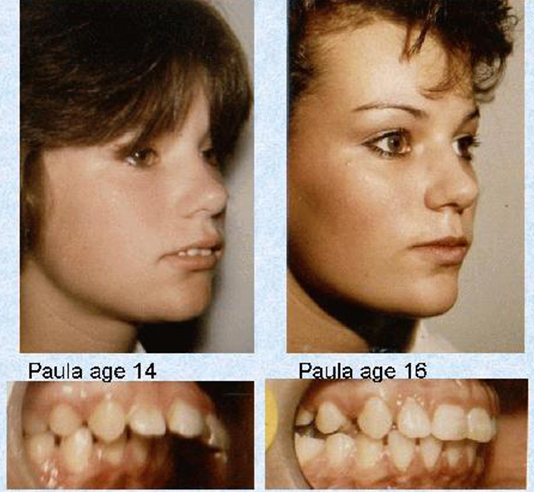I'm Dr Mike Mew and here is my Ultimate Mewing Guide: the technique to improve your face and teeth naturally:🧵


Mewing is a technique that focuses on optimizing oral and facial posture to promote health and aesthetic improvements.
The goal of Mewing is to maintain this optimal posture consistently throughout the day and even during sleep.
Ideally, it should be performed constantly, aiming for a minimum of eight hours each day to see noticeable changes.
Think of Mewing not as an exercise but as the normal posture you should maintain throughout your life.
The goal of Mewing is to maintain this optimal posture consistently throughout the day and even during sleep.
Ideally, it should be performed constantly, aiming for a minimum of eight hours each day to see noticeable changes.
Think of Mewing not as an exercise but as the normal posture you should maintain throughout your life.

The method is built around four core objectives:
Nose Breathing: Ensures that breathing is done through the nose, not the mouth, to improve oxygen intake and overall health.
Proper Swallowing: Encourages the correct position of the tongue during swallowing, which is crucial for maintaining proper jaw alignment.
Perfect Body Posture: Aligns the body to support changes in facial structure.
The Tropic Premise + Suction Hold: Advocates maintaining the lips together, teeth together, and tongue on the roof of the mouth, enhanced by a suction hold to keep the tongue positioned properly throughout the day and night.
Nose Breathing: Ensures that breathing is done through the nose, not the mouth, to improve oxygen intake and overall health.
Proper Swallowing: Encourages the correct position of the tongue during swallowing, which is crucial for maintaining proper jaw alignment.
Perfect Body Posture: Aligns the body to support changes in facial structure.
The Tropic Premise + Suction Hold: Advocates maintaining the lips together, teeth together, and tongue on the roof of the mouth, enhanced by a suction hold to keep the tongue positioned properly throughout the day and night.
Step 1: N-Spot
• Place your tongue on the roof of your mouth,
specifically on the rugae (the ridged area directly behind your upper front teeth).
• This position can be found by saying the letter "N".
• Place your tongue on the roof of your mouth,
specifically on the rugae (the ridged area directly behind your upper front teeth).
• This position can be found by saying the letter "N".
Step 2: Cheesy Swallow
• This exercise helps engage the entire tongue, including the crucial back third.
• To perform it, raise your eyebrows as high as possible, smile widely, and then swallow. You may need to use a glass of water initially.
• This action should make you feel the back of the tongue rise prominently.
• This exercise helps engage the entire tongue, including the crucial back third.
• To perform it, raise your eyebrows as high as possible, smile widely, and then swallow. You may need to use a glass of water initially.
• This action should make you feel the back of the tongue rise prominently.
Step 3: Mona Lisa Swallow
• Named after the famously enigmatic smile of Da Vinci's Mona Lisa, this swallow is performed with a still neutral facial expression.
• This technique focuses on using only the tongue and internal muscles essential for swallowing, without engaging the facial muscles.
• Named after the famously enigmatic smile of Da Vinci's Mona Lisa, this swallow is performed with a still neutral facial expression.
• This technique focuses on using only the tongue and internal muscles essential for swallowing, without engaging the facial muscles.
Step 4: Suction Hold
• After the Mona Lisa Swallow, repeat the swallow a few times to create a vacuum that 'glues' your tongue to the roof of the mouth.
• This is key for maintaining tongue position subconsciously, especially helpful for overnight Mewing and achieving the recommended 8 hours.
• A visible sign that you’re doing it correctly is a raised and tightened area under the chin, indicating a more defined jawline.
• After the Mona Lisa Swallow, repeat the swallow a few times to create a vacuum that 'glues' your tongue to the roof of the mouth.
• This is key for maintaining tongue position subconsciously, especially helpful for overnight Mewing and achieving the recommended 8 hours.
• A visible sign that you’re doing it correctly is a raised and tightened area under the chin, indicating a more defined jawline.
Step 5: McKenzie Chin Tuck
• Correct your overall posture by performing the McKenzie chin tuck.
• This involves pulling your chin straight back to align your head with your spine, reducing forward head posture.
• This adjustment will naturally help press the back of your tongue more firmly against the roof of your mouth, reinforcing the Mewing technique.
• Correct your overall posture by performing the McKenzie chin tuck.
• This involves pulling your chin straight back to align your head with your spine, reducing forward head posture.
• This adjustment will naturally help press the back of your tongue more firmly against the roof of your mouth, reinforcing the Mewing technique.
If you're trying to navigate the intricacies of mewing,
I've developed the MEW app to guide you (and my clinical patients) with 50+ expert tutorials, in-built improvement tracking and much more.
Apple:
Android: tinyurl.com/ewz6yrmk
tinyurl.com/3t5dete8

I've developed the MEW app to guide you (and my clinical patients) with 50+ expert tutorials, in-built improvement tracking and much more.
Apple:
Android: tinyurl.com/ewz6yrmk
tinyurl.com/3t5dete8

• • •
Missing some Tweet in this thread? You can try to
force a refresh














